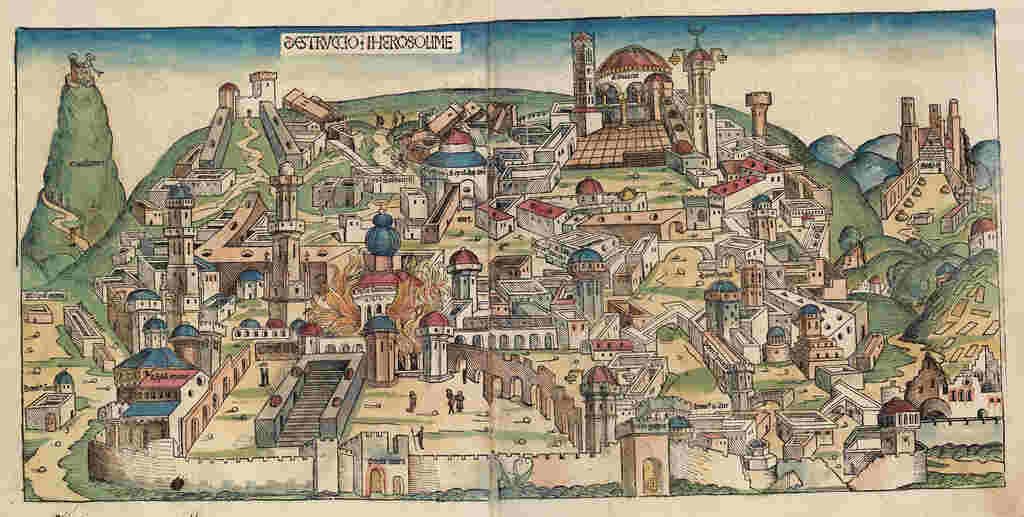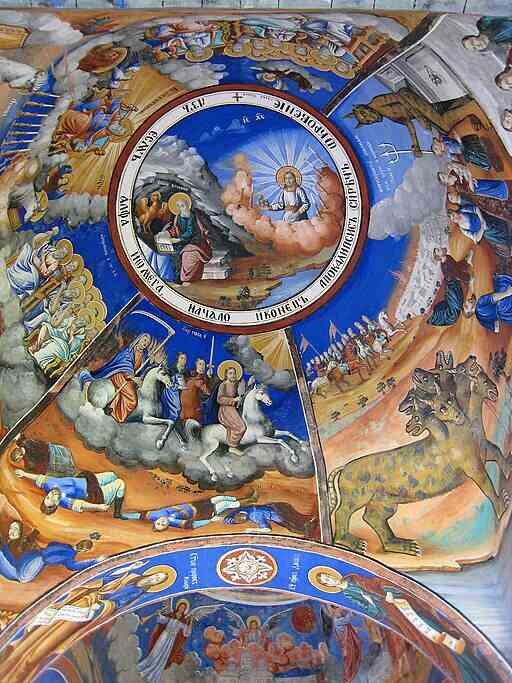Siege of Jerusalem (597 BC)
The siege of Jerusalem was a military campaign led by Nebuchadnezzar II, king of Babylon in -597. In -605, he defeated Nekao II at the Battle of Carchemish, then invaded the Kingdom of Judah. According to the Babylonian Chronicle, King Joiakim of Judah would have rebelled against Babylonian rule, but Nebuchadnezzar II would have taken the city and installed Zedekiah as ruler1,2 in place of Joachin, who succeeded his father Joiakim for three months.
March 16, 597 BC – Nebuchadnezzar captures Jerusalem
March 16, 597 BC. AD, Jerusalem falls into the hands of Nebuchadnezzar.
The mighty king of Babylon receives the submission of the kingdom of Judah. This is the ultimate survival of the kingdom of Israel founded four centuries earlier by Saul, David and Solomon, and whose population has already had to suffer from the Assyrians.
Nebuchadnezzar deports the royal family and the Jewish elite to his country, between the Tigris and the Euphrates (current Iraq).
Ten years later, following a final revolt, the entire population of Jerusalem was sent to Mesopotamia and the Temple of Solomon was destroyed. It is the first diaspora (a population that is scattered across regions which are separate from its geographic place of origin).
The Hebrew prophets of the time, such as Jeremiah and Ezekiel, see in these misfortunes a punishment inflicted on the Hebrew people for having disobeyed God.
In Babylon, however, the Jews will strengthen their religion and regain in prosperity what they have lost in freedom.
Fifty years later, when Cyrus, king of Persia, conquered Babylonia, part of the Hebrews returned to Palestine to build a second Temple, while remaining under the tutelage of the Persians.
With the fall of Jerusalem, the end of Israel’s independence for… 2500 years, until the resurrection of the Jewish state in the 20th century of our era (apart from a brief period of independence under the Maccabees or Hasmoneans).

The siege of Jerusalem is mentioned in the Early Years of Nebuchadnezzar chronicle (ABC 05). Jona Lendering, CC0, via Wikimedia Commons
Siege of Jerusalem (587 BC)
The siege of Jerusalem, which took place in 587 and 586 BC, pitted the Neo-Babylonian army against the city of Jerusalem, capital of the Kingdom of Judah.
Ending with the destruction of the city, that of the temple of Solomon and the deportation of a large part of the population to Babylon, it puts a definitive end to the ten-year conflict which opposed these two kingdoms.

Nebuchadnezzar II outside Jerusalem. Its population starves and is forced into cannibalism. Painting by Petrus Comestor, 1372. UNKNOWN; Illustrator of Petrus Comestor’s ‘Bible Historiale’, France, 1372, Public domain, via Wikimedia Commons
The destruction of the first Temple is a major event in Jewish history and tradition, commemorated annually by the four fasts mentioned in the Book of Zechariah (Zechariah 8:19). It also helps to prepare the ground for Christianity.
The events and their perception are covered extensively in the Bible, especially in the Second Book of Kings and Jeremiah, as well as in the Book of Lamentations and Ezekiel. They are also related in the Babylonian Chronicles (in) as well as, according to Flavius Josephus, by Berossus, a Babylonian Hellenophone historian of the 3rd century BC. J.-C.
War in the Bible | Name of Conflicts, History, Biblical Sources and Dating
Sources: PinterPandai, HistoryVille, Military Wiki is a FANDOM Lifestyle Community, Inside Science
Photo credit (main picture): Michel Wolgemut, Wilhelm Pleydenwurff (Text: Hartmann Schedel), Public Domain via Wikimedia Commons
Photo description: the destruction of Jerusalem by Nebuchadnezzar (medieval illumination). Destruction of Jerusalem under the Babylonian rule. Illustration from the Nuremberg Chronicle.



